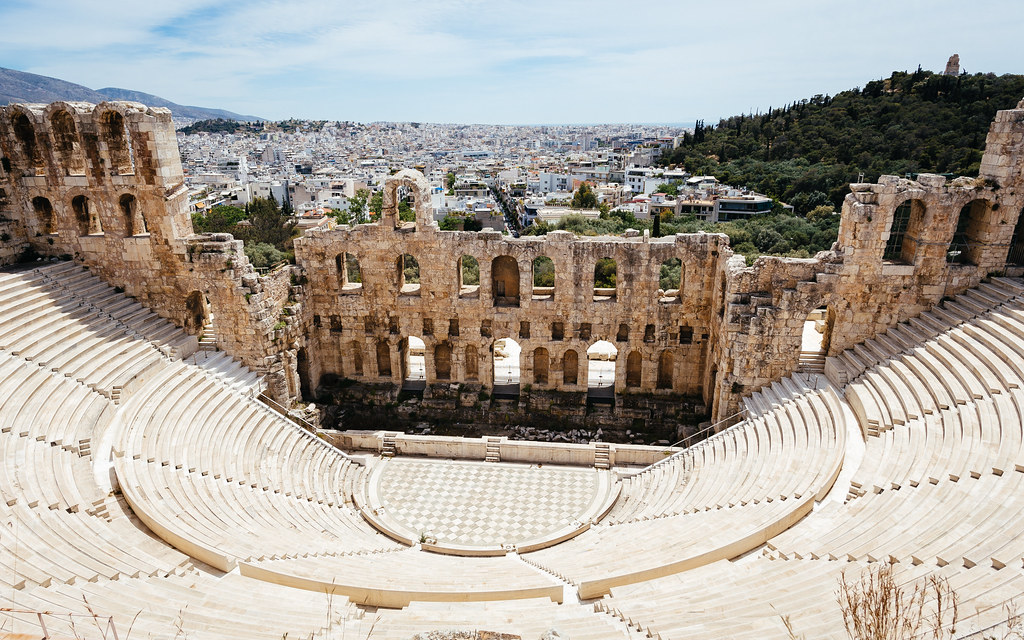What to see on Acropolis in Athens
The Acropolis of Athens is an ancient citadel located on a rocky outcrop above the city of Athens. Among the most famous building, Parthenon Temple, it contains the remains of several Greek and Roman buildings of great architectural and historic significance. Most of the buildings date from fifth century BCE to the second century AD.

Parthenon
The Parthenon is a former temple, on the Athenian Acropolis, dedicated to the goddess Athena, whom the people of Athens considered their patron. Construction began in 447 BC when the Athenian Empire was at the peak of its power. It was completed in 438 BC although decoration of the building continued until 432 BC.
Read more about Parthenon
Acropolis
The Acropolis of Athens and its monuments are universal symbols of the classical spirit and civilization and form the greatest architectural and artistic complex bequeathed by Greek Antiquity to the world.
Read more about Acropolis
Erechtheion
The Erechtheion is an ancient Greek temple on the north side of the Acropolis of Athens which was dedicated to both Athena and Poseidon. The temple as seen today was built between 421 and 406 BCE.
Read more about Erechtheion
Propylaea
A propylaea means an monumental gateway in ancient Greek architecture. Entrance into the Acropolis was controlled by the Propylaea. Though it was not built as a fortified structure, it was important that people not ritually clean be denied access to the sanctuary.
Read more about Propylaea
Asclepeion
To the west of the Dionysos theatre and quite close to the cliff of the Acropolis lies the Asklepieion, the sanctuary of the healing god Asklepios dated to 420 BC. Functioning pretty much as hospitals, the asklepieia were of immense importance in ancient Greece, the most popular being the Asklepieion of Epidaurus.
Read more about Asclepeion
Temple of Athena Nike
The Temple of Athena Nike on the Acropolis of Athens was named after the Greek goddess. Built around 420 BCE, the temple is the earliest fully Ionic temple on the Acropolis. It was a prominent position on a steep bastion at the south west corner of the Acropolis to the right of the entrance, the Propylaea.
Read more about Temple of Athena Nike
Odeon of Herodes Atticus
The Odeon of Herodes Atticus is a stone theatre structure located on the southwest slope of the Acropolis of Athens. It was built in 161 AD by the Athenian magnate Herodes Atticus in memory of his wife, Aspasia Annia Regilla. It was originally a steep-sloped theater with a three-story stone front wall and a wooden roof made of expensive cedar of Lebanon timber.
Read more about Odeon of Herodes Atticus
Theatre of Dionysus
The Theatre of Dionysus Eleuthereus is a major theatre in Athens, built at the foot of the Athenian Acropolis. Dedicated to Dionysus, the god of plays and wine, the theatre could seat as many as 17,000 people with excellent acoustics, making it an ideal location for ancient Athens" biggest theatrical celebration, the Dionysia.
Read more about Theatre of Dionysus
Acropolis Museum
The Acropolis Museum, opened in 2009, focuses on the findings of the archaeological site of the Acropolis of Athens. The museum was built to house every artifact found on the rock and on the surrounding slopes, from the Greek Bronze Age to Roman and Byzantine Greece.
Read more about Acropolis Museum